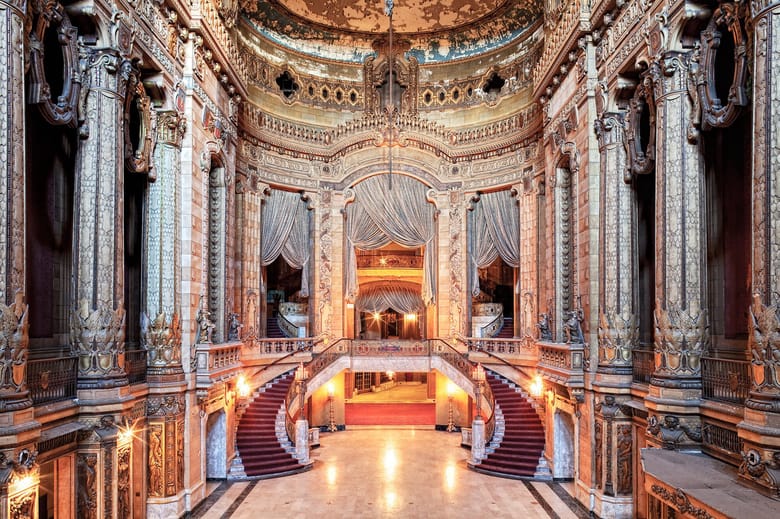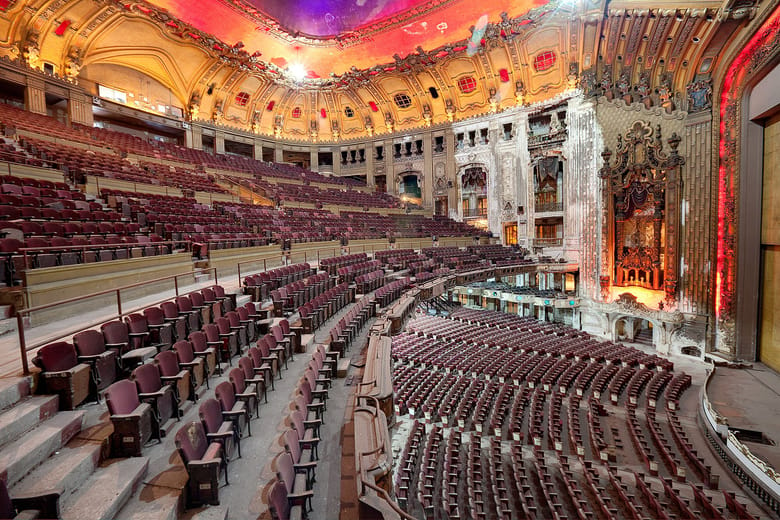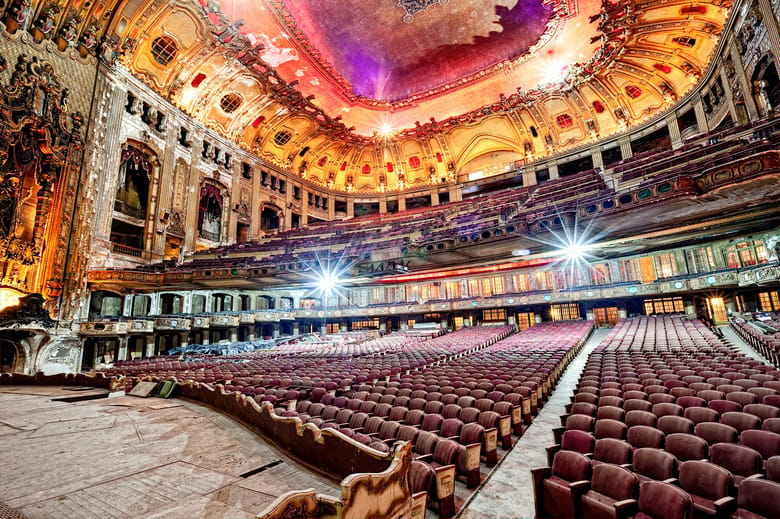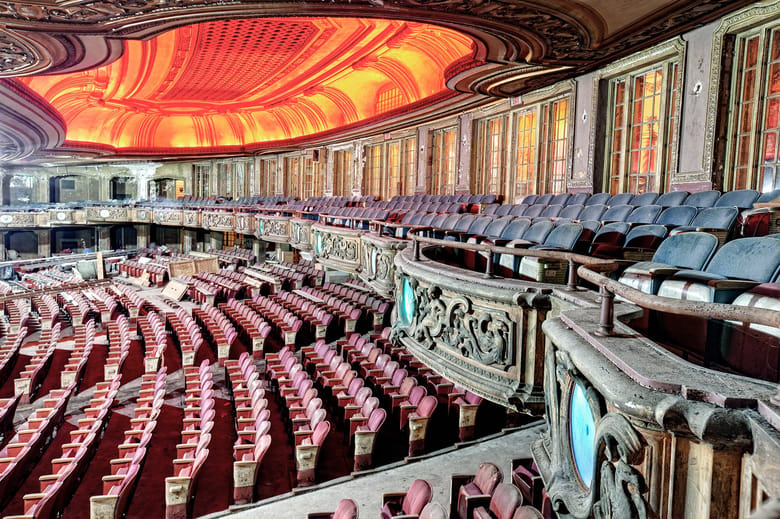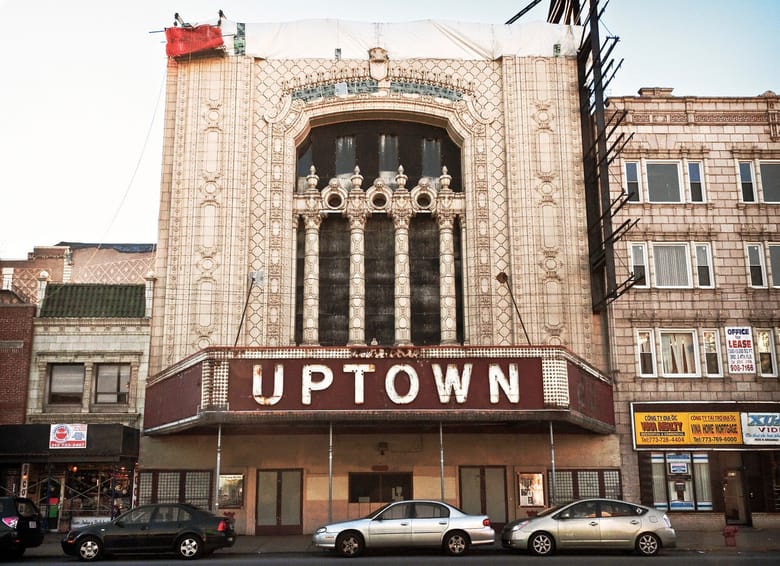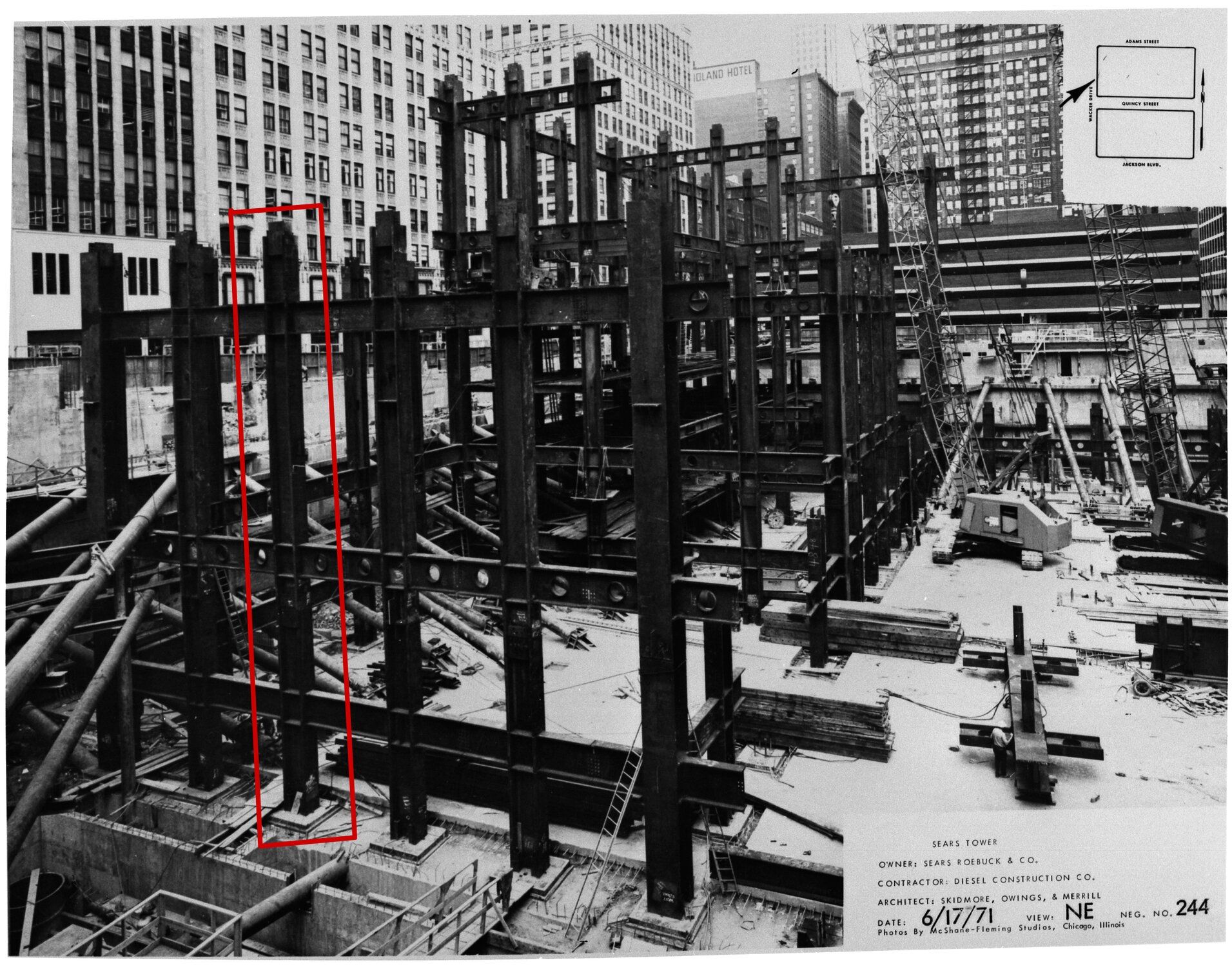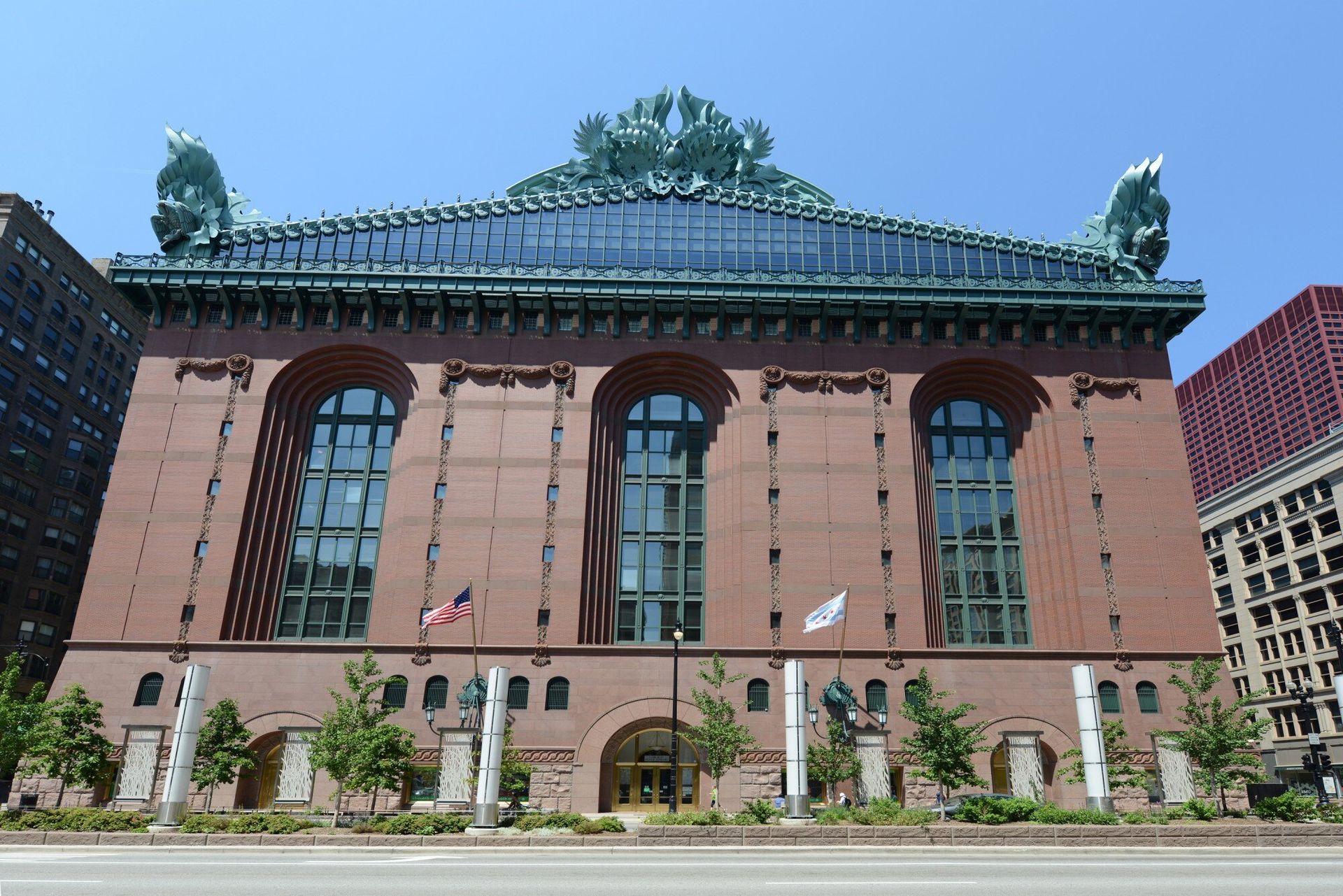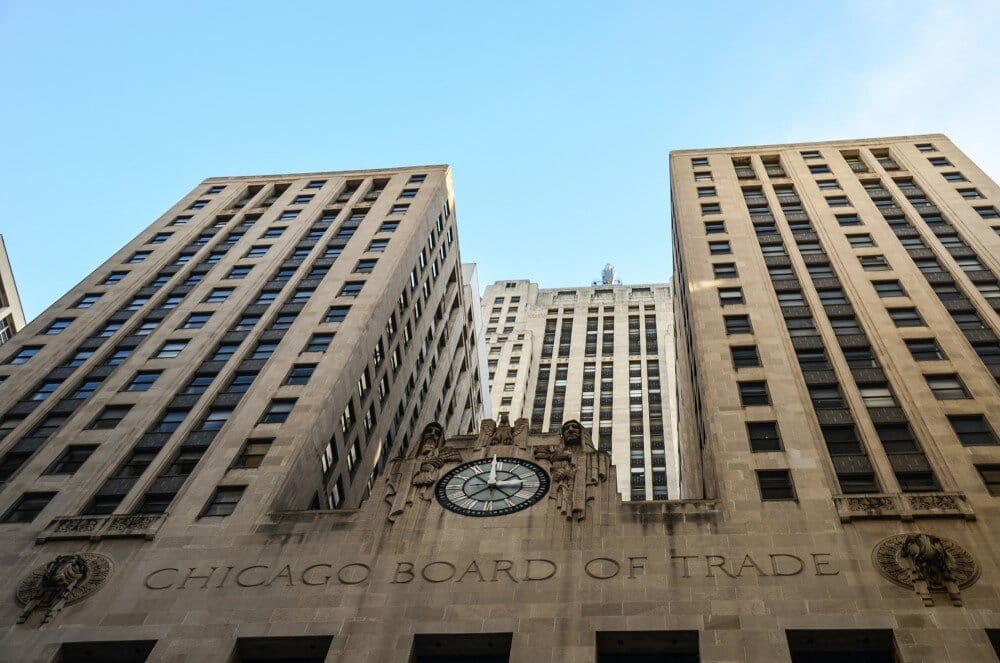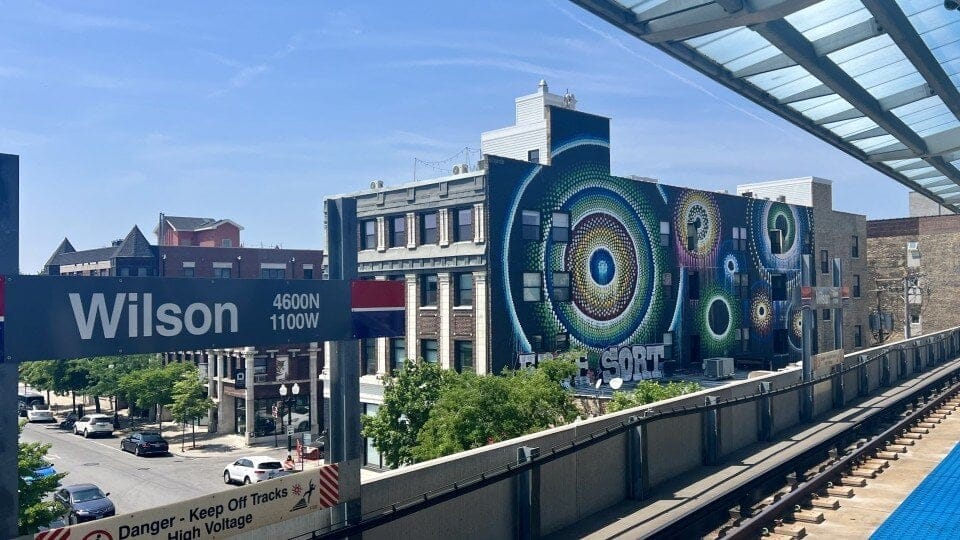Brothers Cornelius Ward Rapp and George Leslie Rapp designed the Uptown Theatre for the Balaban and Katz movie chain as a place to not only see a film, but to have an unforgettable experience. It provided an escape from urban life, in an extravagant setting. Balaban and Katz was a very popular movie chain that started in Chicago in 1916. The company had more than 100 theaters in the Midwest and about 400 theaters across the U.S. Rapp and Rapp were the architects of choice for many of their theaters, including the Chicago Theatre, built in 1921.
Patrons who stepped past the Spanish Baroque Revival façade of the Uptown Theatre entered into the luxurious, six-story grand lobby and felt like they were entering a palace. In fact, Rapp and Rapp wanted the 46,000-square-foot theater to imitate the palaces of Versailles or St. Petersburg, with statues, paintings and tapestries that were reproductions of the world’s masterpieces.
When the theater opened in 1925 movie palaces were so popular at the time it did not even affect the business at the Riviera Theater, just one block away. There was a parade and the line wrapped around the block. Once seated in one of the 4,381 seats, patrons could fully appreciate the amenities of an “atmospheric” theater: floating clouds and twinkling ceiling lights; “state of the art” air conditioning; and a perfuming system built under the seats. While watching elaborate stage acts that preceded the movies visitors were treated to music from the most expensive Wurlitzer organ ever built, or sometimes a full orchestra.
The Uptown Theatre initially presented silent films and live vaudeville acts in the 1920s, then musicals and sound films in the 1930s. The TV show “Queen for a Day” was taped in front of a live audience in the theater in the 1950s-60s. With decreasing revenue in the 1960s, the Wurlitzer organ was sold to help cover increasing insurance costs, along with many of the lavish interior paintings and statues. By the 1970s the theater became a live music venue, hosting numerous rock concerts with headliners like the Grateful Dead, Genesis, Electric Light Orchestra, Rod Stewart, Elvis Costello, Prince, Bob Marley, Bruce Springsteen, The Who and Frank Zappa.
In December 1981, the theater suffered major flood damage when storm drain pipes froze and burst. This marked the end of concerts at the Uptown, and its doors have been closed ever since. It has landed on the Landmarks Preservation Council of Illinois’ “10 Most Endangered Places” list twice and was placed on the National Trust for Historic Preservation Endangered List in 1996.
The theater’s current owner, JAM Productions, purchased the building for $3.2 million in 2008 and estimates it would cost up to $70 million to repair the building and turn it into a multipurpose entertainment complex. The Uptown Theatre has thousands of fans who fervently hope the building can reopen in the future as part of the Uptown Entertainment District, with its ever expanding bar, restaurant and cabaret scene along Broadway.
Thanks to Linda Winke, CAF docent, class of 2000, for researching and writing this story.
Did you know?
The Uptown Theater was placed on the National Register of Historic Places in 1986 and was awarded Chicago Landmark status in 1991.
Did you know?
Several movies filmed scenes at the Uptown, including Backdraft (1991), Home Alone 2 (1992), I Love Trouble (1994), Transformers 4 (2013). Musician Regina Spektor filmed the 2017 video for “Black and White” in the Uptown’s Grand Lobby.
Did you know?
The Uptown has a fan club! Friends of the Uptown is an advocacy group committed to calling attention to the tremendous potential of the theater. Volunteers have worked on many projects, including cleaning and restoration efforts in the Grand Lobby.
Did you know?
The 2006 documentary “Uptown: Portrait of a Palace” explores the history of the theatre with old and recent film footage and interviews with historians, neighbors and key players in the restoration effort. It won “Best Documentary” at the 11th annual Flicker Fest.
